The Corsair Gaming Keyboards and Mice Range: An Experiential Test
by E. Fylladitakis on May 14, 2015 10:00 AM EST- Posted in
- Mechanical Keyboards
- Peripherals
- Gaming
- Corsair
- Mice
Following our thorough review of the K70 RGB, Corsair supplied us with samples of the K65 RGB and the K95 RGB, its smaller and larger siblings respectively. The size of their boxes hints the great length difference between these three keyboards. Visually, Corsair Gaming (re)designed the packaging to match the yellow/black color theme of the newly found brand. As for protection, the packaging is more than sufficient to protect the keyboards during shipping.
As expected, the K65 RGB is basically a tenkeyless version of the K70 RGB. It shares the brushed aluminum body construction, with the switches attached directly on it, lacking a surrounding frame. With the exception of the media/lighting keys near the top of the keyboard, a Cherry MX RGB switch can be found beneath every key. The K65 RGB is available only with Red switches, which might disappoint those who type a lot / prefer blue switches.
Due to the limited length, Corsair had to remove the volume wheel and most of the media keys. A mute button took the place of the Windows key lock button, which has been relocated to the far right. Two short media keys replace the metallic volume wheel, providing usable (but not quite as practical) volume control.
The cable of the K65 RGB is thick and rather stiff, covered with quality nylon braiding. It also cannot be removed from the keyboard. People who opted for this keyboard as a solution for more convenient frequent transportation may be somewhat disappointed by that. On the other hand, the robustness of this design is leagues apart from most keyboards that are using removable cables, especially those with micro-USB connectors.
Same as the K70 RGB, the K65 RGB has a stiff plastic switch next to the exit point of the braided cable for variable polling rates. This function will be useless with modern systems but may enhance the compatibility of the keyboard with older systems and certain devices, such as cheap KVM switches. There are four polling rates available: 1ms, 2ms, 4ms or 8ms (lower is faster). There is also a fifth mode, the "BIOS" mode, which converts the K65 RGB to a generic keyboard, disabling the media keys and all advanced features.
Strangely for a tenkeyless design, Corsair also decided to include a full-length wrist rest with the K65 RGB. The corona-treated plastic of the wrist rest feels very soft to the touch, adding extra comfort for short to medium term typing. For long term typing, it will not help very much, as the wrist rest is far too short compared to the height of the keys. As with the vast majority of keyboards, there are two plastic legs beneath the K65 RGB for increasing the tilt. Unlike with the K70 RGB, there are no adjustable feet near the front of the keyboard.
While the K65 RGB is a limited, more compact version of the K70 RGB, the K95 RGB is the exact opposite. Corsair's flagship keyboard has 22 keys more than the K70 RGB, enhancing its role as a gaming keyboard. Eighteen of those keys are macro-dedicated keys, located in groups of six to the left side of the keyboard. It is unlikely that the vast majority of the population will need as many macro keys. Considering the fact that the keyboard is fully programmable and other keys can the repurposed to execute macros, as well as that the macro keys also change between different modes, the number of macros that the K95 RGB can hold in a single profile is practically infinite.
The K95 RGB shares the same design with the K65 RGB and the K70 RGB, with the keys directly attached on the black brushed aluminum body. The only dissonance is that the extra area for the macro keys is plastic, not aluminum, and the difference is easily discernible by naked eyes. For these extra keys, Corsair expanded the plastic bottom part of the body, trying to simulate the appearance of the brushed aluminum. With the difference being obvious and considering the immense price tag of the keyboard, we expect that many will not be very happy about this.
Four extra keys are located above the ESC key, with the first initiating on-the-fly macro recording and the other three are by default used to change modes/profiles. A LED ring surrounds the macro recording key, blinking while a macro is being recorded. By comparison, the lack of these keys on the K70 RGB is rather limiting, as the user cannot manually switch modes and or profiles without sacrificing another key. You can set the profile to change automatically once the game is launched, and link different profiles to each game, but again you would not be able to change profiles or modes without repurposing a key. With the K95 RGB, you can still link profiles to initiate automatically once a game starts, but these three keys allow the direct switching between at least three modes without having to sacrifice a key.
All of the main keys and the eighteen extra macro keys have Cherry MX RGB switches installed beneath them. Unlike the K65 RGB, the K95 RGB is also available with Brown switches, not only Red. As Brown switches are very popular among typists and casual/all-around users, the K95 RGB is obviously targeted at a much wider audience than just gamers. The K95 RGB also retains the volume adjustment wheel at the top right side of the keyboard. A sound mute key is right next to the wheel and four standard media keys just underneath it. As these keys are very short, it will take some time for the user to learn not to hit the keys at the top row of the numpad.
As with the smaller keyboards, the K95 RGB too has a full-length wrist rest. Unlike with the smaller versions, this time two thumbscrews secure it on the keyboard, although the standard plastic clips will definitely be enough for most people. The soft, plastic wrist rest of the K95 RGB still shares the same issues with the other two keyboards. It is far too short compared to the height of the keycaps, making it rather difficult to type while the wrists are resting on it.
The same polling rate selection switch can also be found at the back of the K95 RGB, as well as the same thick, stiff and strong braided cable. Sadly, there are no USB ports at all. For a keyboard like the K65 RGB, the lack of a USB hub is reasonable and acceptable. However, the lack of a single port on the K95 RGB is very strange and rather inconvenient. There is plenty of room to install a couple of USB ports and the price of the keyboard just does not justify such omissions. On a keyboard such as this, the presence of USB ports is highly important, as it allows gamers to connect their mice or professionals to easily access external devices. The only reasonable explanation for this is that the two USB ports that this keyboard has would not be able to provide enough current to feed a USB hub.
Both the K65 RGB and the K95 RGB are using the same Cherry MX RGB switches, exclusively made for Corsair (for the time being, at least). These are the same Cherry MX RGB switches that were showcased in the more thorough K70 RGB review. Summarizing, they have the ability to output any RGB color (16.7 million colors total). Due to their position, the top character of the keycap will always be much brighter than the bottom one. Lighting customization is superb. From simply per-key illumination and type lighting to the creation of every lighting effect a user can imagine, Corsair's CUE software can do it.
My experience with the Corsair Gaming K65 RGB was somewhat mixed. It felt as if the keyboard had tremendous potential but lacked the capacity to deliver it. Having a fully programmable tenkeyless keyboard can be an excellent tool for those that lack desktop space but it is an unnecessary hindrance for everybody else. The lack of any extra keys means that for every macro and special command a main key has to be sacrificed, even for the manual switching of modes and profiles. The removal of the numpad just magnifies this issue. If the user wants to use different profiles for games and applications, these should be tied to the application itself, with Corsair's CUE software switching the profile automatically once the game or application starts. Still, automatic switching to a custom profile with many keys repurposed to serve in-game functions can still be problematic, as there are instances where the user needs to switch back to a standard layout within a game. This is especially true with MMO games, where the gamer needs to switch to a normal layout and type, then roll back to the custom layout to access all the macros and advanced commands for in-game actions. To counter this, I had to program two modes in every custom profile, one for in-game functions and one for standard typing, and sacrificed the Pause key to cycle through the two modes. Since I use keyboards to type for very long periods, the K65 RGB was relatively tiring. This was not due to the tenkeyless design, which is rather easy to get used to, but because of the Cherry MX Red switches. The linear, soft switch is just not ideal for typing and the difference is apparent if you have been using a keyboard with MX Brown switches for a long period.
Then, after a few days of using the K65 RGB, it was time to give the K95 RGB a try. The K95 RGB remained on the desk for over a month, and it remains still. Yes, the Cherry MX Red switches are no less tiring than with the K65 RGB, but the K95 RGB is far more functional and versatile. It even makes the K70 RGB, which lacks any macro and profile/mode switching keys, feeling as an incomplete product. What extra tiredness the MX Red switches of the K95 RGB induced, the presence of the numerous macro keys reduced it three times over. At first, such a number of macro keys seem useless. To some people, the very existence of macro keys feels useless. This could not be further from the truth. Once you get used to their presence and you spend the time to perform the initial programming, you will have a very hard time getting this keyboard off your desk. This does not only involve gaming but professional applications as well.
I only programmed a single game profile in the K95 RGB, three profiles for complex professional applications and one standard profile for casual use. As far as the game is concerned, being an online action RPG, the bulk of the macro keys were used to insert common text messages. More complex actions, such as the almost instant switch of skills and items, were programmed into the F keys, which are of no use in that particular game and right above the numeric keys that the game is using. This allowed the perseverance of the stock layout of the main keyboard, allowing us to stop and chat or type a quick message without having to switch the mode/profile at all. For the professional applications, repetitive but relatively complex commands that usually require more than four clicks to execute were programmed to the macro keys of each individual profile. After the learning curve of the first few days, this approach visibly increased my productivity by reducing (sometimes even halving) the time it required to perform certain tasks. At the hands of a skillful professional, such as an architect or a programmer, the K95 RGB can be a formidable tool, allowing the execution of complex commands or the insertion of repetitive code in an instant.


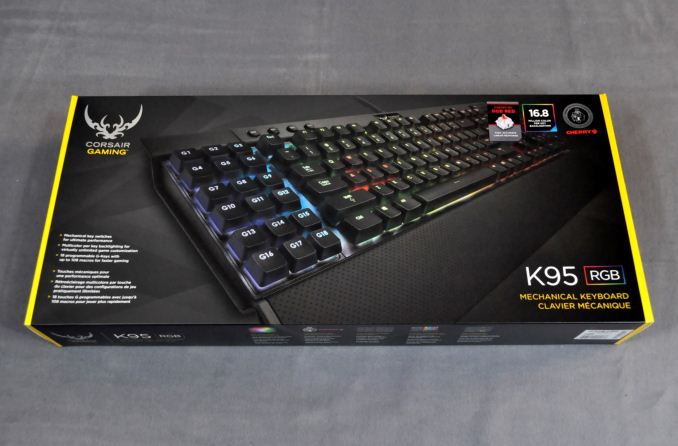
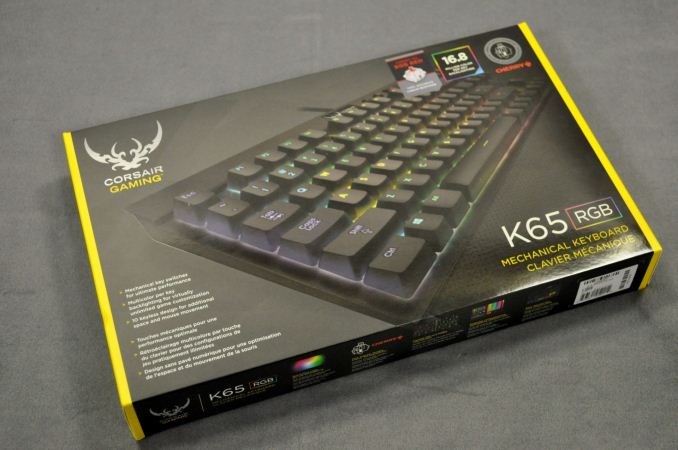

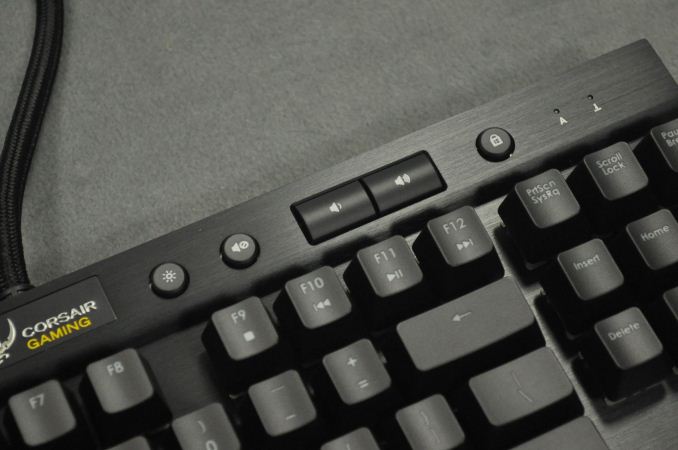







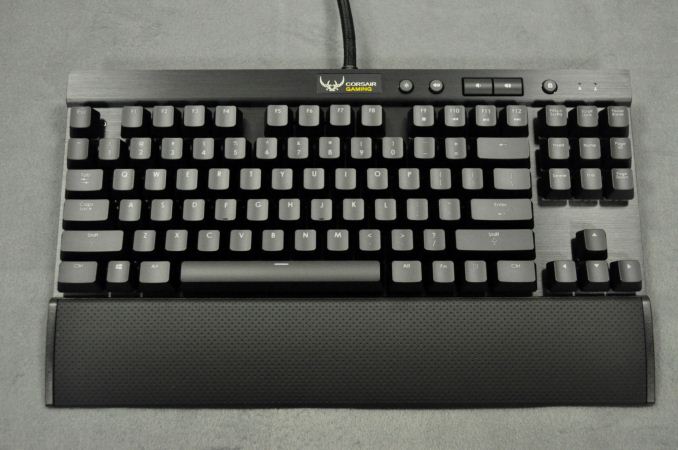
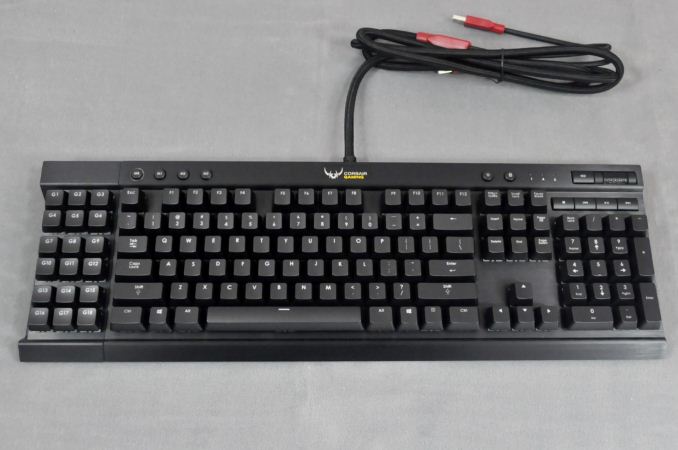
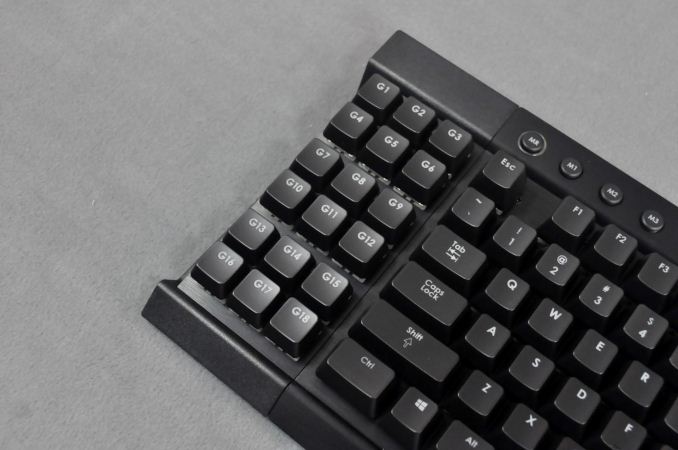
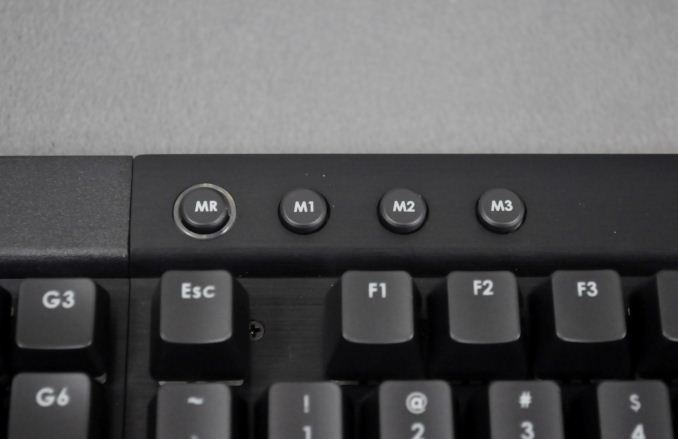
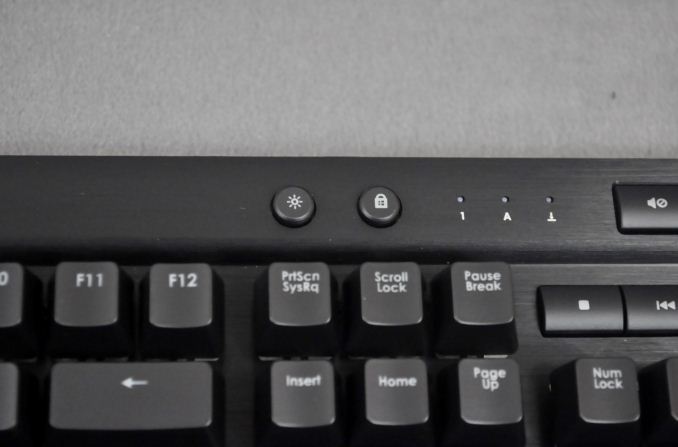
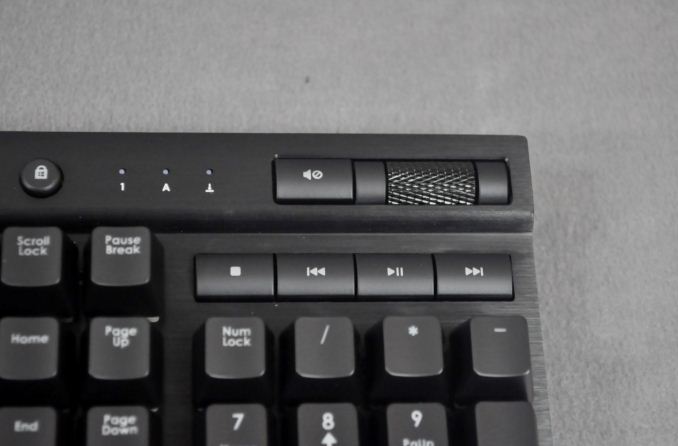
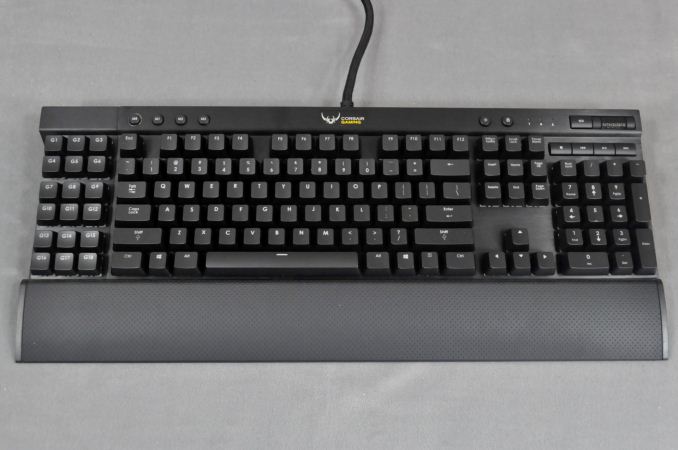






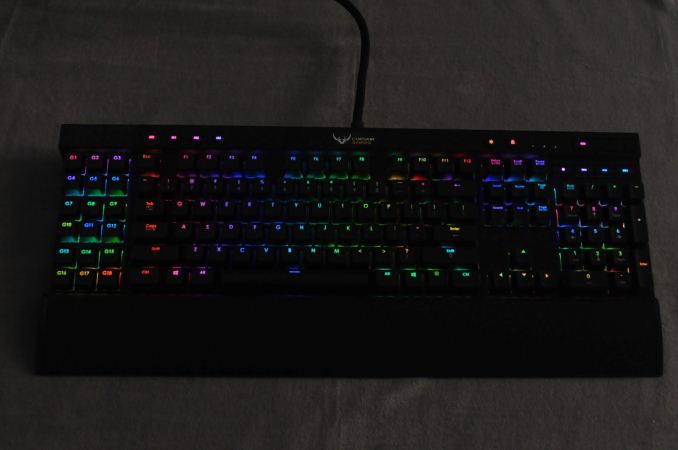








56 Comments
View All Comments
Laststop311 - Friday, May 15, 2015 - link
I am actually looking for a tenkeyless keyboard to give me more room on my desk since I can't even remember the last time i used the numpad. If they allowed me to use Blue, Brown, Green or White switches I'd probably buy it. I'd probably rather have a cheaper mono red backlit keyboard as red is easier on eyes. I'm basically looking for a mechanical tenkeyless mono red backlit 1: Cherry mx blue switches 2: Brown 3: White 4: Green in that order. Haven't done the research yet tho. Just not in the budget yet. Gotta save everything I got for my q3-q4 2016 skylake-e build as it's going to be a 3500-4000 dollar build 1000 for 8 core cpu 1000 for pascal titan 1000 for mobo, ram, case, psu, cpu heatsink, and noctua case fans And the final 500-1000 for ssd and hdd just depending on if I can get motherboard with 2x ultra m2 slots since with 40 lanes I'll only use 16 + 4 + 4 so 24. I rly hope the 1TB 3d v-nand version of the sm951 nvme drive is out by skylake-e then I wont need to worry about 2x m2 slots. These insane game install sizes is making my 512GB 840 pro tight on space for my next pc I rly want 1TB of ssd space.meacupla - Friday, May 15, 2015 - link
You might want to check out Coolermaster's lineup.Moderately priced, good build quality and no need for extra software, although no macro or customization either.
Laststop311 - Friday, May 15, 2015 - link
Ye I dont use macros just want a nice small tenkeyless mono red backlit with the right cherry switches for a moderate price.dvinnen - Friday, May 15, 2015 - link
From the article title I thought you were going to start doing legit mice tests like esreality did years ago. Kinda a disappointmentBrutuski - Friday, May 15, 2015 - link
And I'm confused as to why this wasn't a pipeline story.rowny - Saturday, May 16, 2015 - link
Anandtech used to be the technical reference on all topics, now it's becoming flashy and shallow.i7 - Saturday, May 16, 2015 - link
Man, spelling mistake in the title. Someone didn't proof-read their article lol.I have a regular Corsair K70. Love it a lot, Really wanted a RGB model but the issues are a turn-off. Refuse to waste my time.
TheSlamma - Sunday, May 17, 2015 - link
The Software for the keyboards is complete garbage. Passhypergreatthing - Monday, May 18, 2015 - link
I bought a K70. It worked for about 6 months until i got a few drops of water on the keys. Yup, that's all it takes to ruin the keyboard. Some condensation from a drink got on my fingers and got on the keys. The switches are made of a clam shell design which the part where the two halves meet is right on the surface of the aluminum back. Guess where the drop of water goes straight into?Go read the number of complaints about keys repeating and whatnot. That's all due to water.
paulemannsen - Tuesday, May 19, 2015 - link
i want lag tests with different drivers and operating systems. sry, but reviews like this are useless to me.